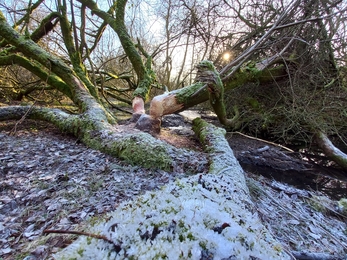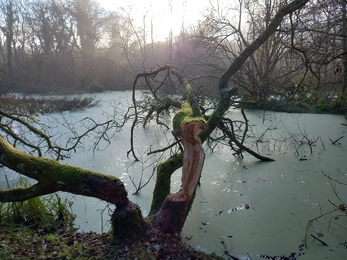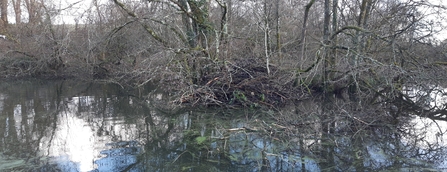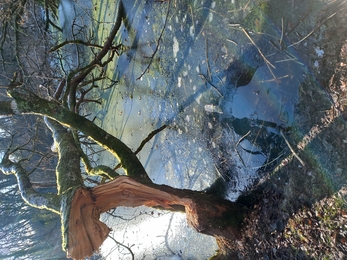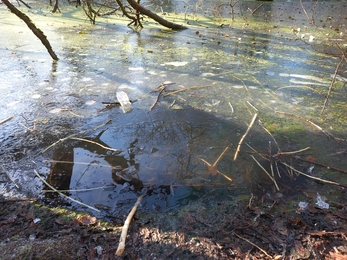As temperatures continue to dip, let’s delve into beaver behaviour in winter and take a look around our enclosed scientific study site, in the midst of a freeze. Our watery winter wonderland if you will.
During the colder months, like any of our other native wildlife, beavers can become less active; though they don’t hibernate, they tend to spend a larger portion of their time in the lodges or burrows.
The decision to create a lodge or a burrow is linked to the habitat available, substrate, water depth/rise and geomorphology of a site. Lodges are often only noticeable during the winter period, when all the surrounding vegetation has died back. Chambered ‘mounds’ of sticks, logs and mud vary in size, are well insulated and can be built with a ‘chimney’ to regulate temperature. Burrows into riverbanks are often not visible unless the water level recedes.
Our site has a lodge constructed on the end of an existing island where the beavers have chosen to construct above land, not burrow, due to the very low profile of the banks surrounding the water. Lodges and burrows have entrance tunnels, that lead to a series of chambers. The first, at water level for feeding, then further in, above water level, sleeping chambers. There can be multiples of both chambers.
Lodge and burrow entrance tunnels are normally accessed underwater. This enhances the safety of the beaver entering and exiting the lodge, but also enables access to food during winter when paired with food caches.


